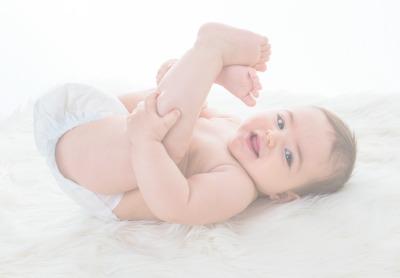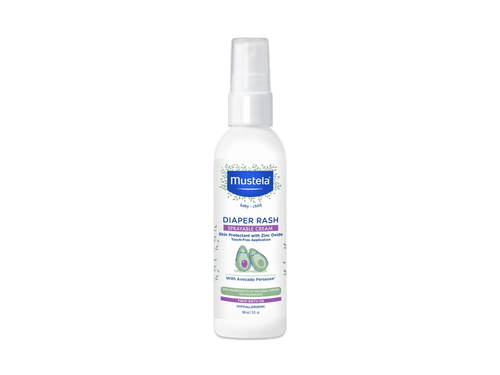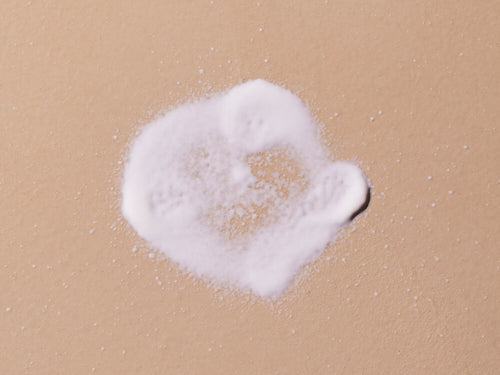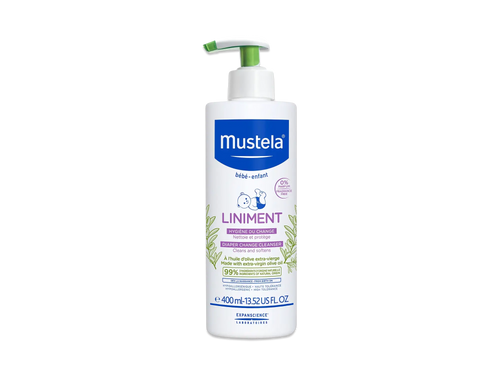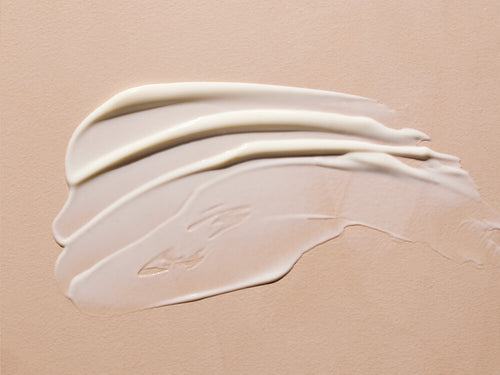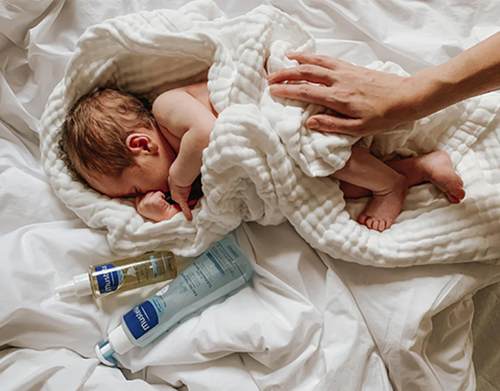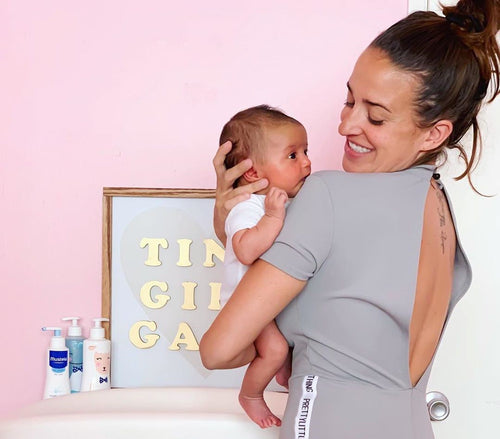Babies are known for having soft, delicate skin. We even have a figure of speech for it! But what happens when the skin on your baby’s bottom isn’t “as smooth as a baby’s bottom”? Diaper rash is probably the culprit.
Diaper rash is one of the most common skin conditions that babies experience. The American Academy of Pediatricians estimates that as many as 25 percent of infants and toddlers have diaper rash at any given time.
But there’s no reason to worry! Diaper rash is easily treatable and normally goes away in a matter of days if cared for properly.
In this post, the baby experts at Mustela detail everything you need to know about diaper rash. We’ll start by explaining the symptoms of diaper rash and telling you which signs necessitate a trip to the doctor’s office. Then we’ll go over the causes of diaper rash.
Finally, we’ll give you 12 easy tips for treating your baby’s diaper rash so that you can keep your little one’s bottom as soft and smooth as it should be!
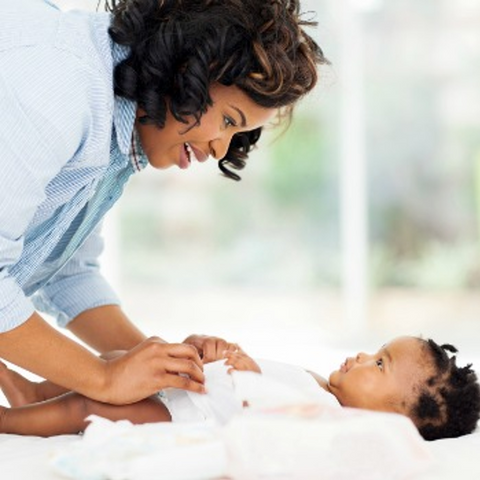
What Are The Symptoms Of Diaper Rash?
The official medical name for diaper rash is “irritant diaper dermatitis.” This term refers to any type of rash that forms on or around your child’s diaper area. Most often, this means the skin around your baby’s diaper area will appear red and irritated.
Sometimes, the rash may look puffy and feel warm to the touch. Small bumps might appear on your baby’s bottom and thighs. All of these symptoms are perfectly normal.
However, there are a few signs that indicate a more serious type of diaper rash. The following symptoms mean it’s time to go see your pediatrician:
-
Blisters or sores
-
Pus forming on your baby’s skin
-
A yellowish tint to the rash
-
Cracked skin or bleeding
-
Fever
Keep an eye out for these red flags. If any of the symptoms above begin to appear on your baby’s tushy, legs, or waistline, take your little one to the doctor’s office as soon as you can.
What can you expect if you do end up going to the pediatrician for diaper rash? Your baby’s doctor may be able to make some suggestions about your diapering routine, and if necessary, they may prescribe an ointment or medicine.
Based on the type of rash your baby has, the pediatrician will give you an antifungal, antibiotic, or steroid cream to use for several days, or even an oral antibiotic. You should only use these creams and medications if your pediatrician says your baby needs them.

What Causes Diaper Rash?
There are a number of factors that can cause diaper rash. Here are the most common ones.
Dirty Diapers
Dirty diapers are a leading cause of diaper rash. After a diaper is soiled, the urine and feces rub against your baby’s skin. This causes irritation and can lead to bacterial infections, both of which result in diaper rash.
Excessive Moisture
While skin needs moisture to be healthy, too much moisture can cause problems because bacteria flourish in warm, moist environments.
Diapers create a seal around your baby’s waist and thighs to prevent leakage, but this also traps moisture in. Make sure your baby’s diaper area is completely dry before putting a clean diaper on.
Chafing
Diapers are meant to fit snugly on your little one’s body. This helps them stay on and prevents leaking when the diaper is dirtied. However, a diaper that is too tight can chafe your baby’s skin and cause diaper rash. If your little one’s diapers are becoming too tight, try switching to a bigger size.
Changes In Your Baby’s Diet
If you’ve recently switched from breast milk to formula or transitioned to solid foods, your baby’s stool may change. In some cases, this can lead to diaper rash.
Sensitive Skin
All babies have delicate skin, but some have skin that is extra sensitive. For example, your baby may have very sensitive or eczema-prone skin. And there’s nothing wrong with that! It just means that your little one is more susceptible to conditions like diaper rash.
Bacteria
Bacteria thrive in warm, moist environments like the one a diaper provides, so your baby’s diaper rash may be caused by a bacterial infection. This is especially true if your baby has slept (or spent too much time) in a dirty diaper.
Yeast Infection
In some cases, a yeast infection might be the reason behind your baby’s diaper rash. Candida, a strain of yeast that lives on the skin’s surface, may have found a foothold in the creases and folds of your baby’s diaper area, resulting in a rash.
How To Treat Diaper Rash: 12 Easy Tips

Regardless of how the diaper rash got started, your task now is to get rid of it! Here are the 12 best ways to treat your baby’s diaper rash and keep your little one’s tiny bottom healthy and smooth.
1. Change Your Baby’s Diaper Often
It may seem like your baby’s diaper is always wet. Frequently changing diapers might be a bit of a chore, but don’t let that stop you from quickly removing a soiled diaper.
If your baby’s skin is in contact with urine or stool for an extended period of time, it will become irritated and diaper rash might form. Always change dirty diapers immediately!
That said, being proactive in taking care of a diaper rash is about more than just changing a dirty diaper. It also has to do with the diaper itself.
When it comes to the diaper you put on your baby’s behind, you’ll need to figure out which diapers are best for you and your baby. Between various types of disposable diapers and cloth diapers, there are several options on the market. Picking one can be an overwhelming task!
Unfortunately, there is no one specific diaper that’s best for every baby, and you may need to try several before finding one that agrees with your baby. If you think the diapers you’re using are irritating your baby’s skin and contributing to diaper rash, try a different one.
And, of course, if your baby has extra sensitive skin, choose diapers that are made without added fragrances or dyes.
2. Wash Cloth Diapers Thoroughly
If you’re a cloth-diaper parent and you’re dealing with diaper rash, the steps for treating it are basically the same as for disposable diaper users. The one extra thing you’ll need to do is make sure that your cloth diapers are cleaned properly so you’re not putting baby back into an irritating or dirty diaper.
How can you clean cloth diapers? Ultimately, the best method and schedule for washing cloth diapers will depend on what works for you and your household. However, there are a few basic tips that you should take into account in order to clean, disinfect, and get rid of any leftover soap residue.
This is especially important when you’re head-to-head with diaper rash.

First, dump feces into the toilet or spray the diaper down. Some people prefer to use a diaper liner that can go straight into the trash or be flushed down the toilet.
That’s fine, too.
When it’s time to wash a load of dirty diapers, start with a cold water rinse cycle or pre-soak the diapers in cold water. Then wash with a hot water cycle using baby-friendly detergent. Finally, give the diapers an extra rinse cycle to get rid of any detergent that is still in the fabric, which can irritate baby’s sensitive skin.
Speaking of detergent and the other products you use in your diaper laundry, keep in mind that the most “baby-friendly detergent” may be different for every baby.
If you think the detergent you’re using might be contributing to diaper irritation, try switching to another. Also, stay away from fabric softener and dryer sheets. These often contain extra chemicals and fragrances that can irritate baby’s skin.
If you want to disinfect your cloth diapers, look into bleaching them. This isn’t something you’ll want to do every time you wash but can be helpful every now to kill the deep-down germs.
3. Cleanse Your Baby’s Diaper Area Thoroughly
Make sure to thoroughly cleanse your baby’s diaper area after every dirty diaper. You certainly don’t need to give your little one a bath each time, but it’s a good idea to use a gentle cleanser like Mustela's No Rinse Cleansing Water.
4. Use Gentle Baby Wipes
Not all baby wipes are created equally. Some baby wipes may contain alcohol or other strong chemicals that can hurt your baby’s soft, delicate skin. And when you’re dealing with diaper rash, you want to choose the gentlest and least irritating products.
Mustela’s wipes are carefully designed to gently cleanse your baby’s diaper area without causing any irritation or dryness. For extra sensitive or eczema-prone skin, we recommend fragrance-free wipes like our Certified Organic Water Wipes with Cotton and Aloe or Cleansing Wipes with Avocado.
5. Avoid Baby Powder And Talcum Powder
Keeping baby’s diaper area dry is one of the best ways to avoid and clear up diaper rash. Baby powder and talcum powder do a great job of keeping your baby’s diaper area dry, but they have hidden risks.
Your child may inhale some of the powder while you’re putting it on, which can lead to breathing problems and may even cause lung damage. Don’t use any kind of powder to treat your baby’s diaper rash.
Instead of using baby powder, keep your baby’s bum dry by changing them frequently and letting them go without a diaper for part of the day.
6. Let Your Baby Go Diaper-Free
One of the easiest ways to treat your baby’s diaper rash is to simply let your little one spend some time in their birthday suit. Diapers trap moisture in and can cause your child’s skin to become clammy and tender, which makes it vulnerable to rashes.
Letting your baby sit for 10-15 minutes without a diaper on will allow their skin to dry and air out. It’s often easiest to do this when changing diapers.
Giving your baby diaper-free time is a great idea until you end up with pee on the couch or poo on the floor. Here are a couple of ideas to keep your house dry and clean while letting baby go diaper-free.
First of all, don’t have diaper-free time on your bed, couch, or carpet. Keep your little one on the floor with a towel or waterproof mat or mattress pad underneath them. Also, if you have a little boy, lay a clean cloth over his private parts to keep him from peeing on everything in sight.
Keeping your child contained to a mat or towel might sound impossible if your baby is already on the move. Giving them a toy might encourage them to stay on the mat.
Alternately, if the weather is right, you can take your little one outside and lay a towel on the grass (just make sure you protect your baby from the sun if necessary!).
7. Bathe Your Baby Once (At Most) Per Day
While giving your little one a regular bath is important, bathing them too frequently can dry out their skin and cause irritation. Limit baths to no more than once per day.
It’s often best to bathe your baby once every other day, and use a gentle No-Rinse Cleansing Water to clean your little one on the days without baths. Also, use warm water, rather than hot water, to bathe your little one.
In addition to the frequency of bathtime, it’s important to think about what you put in your baby’s bathwater. Bubble baths can be great fun, and with Mustela’s Multi-Sensory Bubble Bath, they can be good for your baby’s skin, too!
However, when you’re trying to get rid of diaper rash, be sure to stay away from any harsh soaps in baby’s bath. Instead, make bath time work in your favor by giving your baby an oatmeal or baking soda bath. Either one will help soothe and calm baby’s irritated skin.
Simply add a little baking soda or powdered oats to the bathwater and let your baby soak in the tub as usual.

8. Use Gentle Cleansers
Most types of soap are much too harsh for a baby’s delicate skin — even the ones that call themselves baby soaps! Instead of these irritating soaps, use gentle cleansers to wash your child’s skin.
Mustela’s Gentle Cleansing Gel or Soothing Cleansing Gel will clean your baby’s skin without irritating it or removing moisture.
9. Pat Your Baby’s Skin Dry
After bath time, gently pat your little one’s skin dry. Don’t rub your baby’s skin, as this can cause irritation and inflame diaper rash. Always use a soft towel to dry your baby off.
10. Moisturize Your Baby’s Skin With Lotions Specially Formulated For Diaper Rash
While excessive moisture can lead to diaper rash, dry skin may also lead to rashes! The solution is to keep your baby’s skin appropriately moisturized while ensuring that your little one’s diaper area is totally dry before putting a new diaper on.
Mustela's Liniment is a great addition to your diaper-change routine. It works wonders for your little one’s delicate, dry skin. It effectively treats diaper rash because it’s specially formulated to simultaneously cleanse and moisturize your baby’s sensitive diaper area.
This is one product you will always want to have in your diaper bag!
11. Apply Diaper Cream

A little bit of diaper cream can go a long way in treating diaper rash. Remember that when applying diaper cream, a thin, white layer of the cream should remain on your little one’s skin.
The zinc oxide in most diaper rash creams acts as a natural barrier, thus protecting your baby’s skin from chafing and contact with urine or stool. Use Mustela’s clinically proven Diaper Rash Cream 1 2 3 for amazing results.
For a soothing, touch-free solution to help prevent diaper rash, our Diaper Rash Sprayable Cream is the perfect way to seal out wetness and treat your little one to gentle, natural ingredients.
You can also try our Diaper Cream with Olive Oil and Aloe. This easy-to-apply formula moisturizes and calms your baby’s bottom and is safe for even the most sensitive skin.
12. Keep Cicastela Moisture Recovery Cream On Hand
If you already have Cicastela Moisture Recovery Cream in your first aid kit or diaper bag, you may be using it to treat scratches, scrapes, insect bites, and red patches. But did you know you can also use this soothing cream for redness and irritation in the diaper area?
Cicastela cream provides the skin with a light, breathable protective barrier and works to relieve discomfort and promote skin repair. Apply it twice per day to a clean, dry bottom to keep your baby comfortable while they’re recovering from diaper rash.
Diaper rash might seem concerning at first, but it’s a common condition and is easily treated with a little extra love and a variety of Mustela products. Follow the 12 simple steps we’ve shared above and your baby’s skin will be soft and smooth again in no time!


